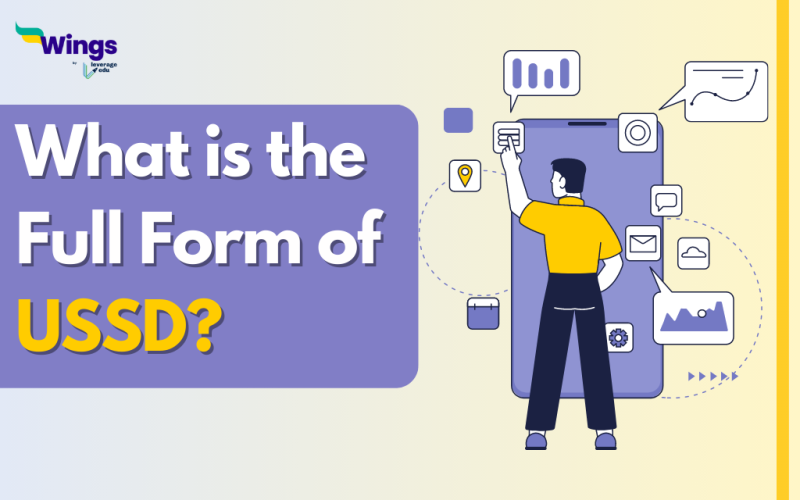USSD Full Form: USSD stands for Unstructured Supplementary Service Data. QuickCodes and feature codes are alternate names for USSD. It is a networking protocol that GSM (Global System for Mobile) phones use to send contact or text messages from a cell phone to an application hosted by the mobile operator. In a nutshell, it is a system that allows GSM-based cellular phones to communicate with the network operator’s equipment.
USSD is a session-based specification that establishes a real-time session between a mobile device and a network operator’s device. The only difference between it and SMS is that, unlike SMS, USSD transactions take place only during the session between the parties involved. USSD is a bidirectional knowledge exchange that takes place as long as the link is open.
Objectives of USSD
Table of Contents [show]
The primary goal of developing Unstructured Supplementary Service Data (USSD) was to create a simple and efficient method for consumers to access various information and services on their mobile phones without requiring a data connection or Internet access. USSD was created to provide a quick and dependable way for users to engage with their service providers and access a variety of services by inputting codes into their phones.
Other goals for creating USSD include:
- To enable communication between a mobile phone and the computers of the service provider without the use of a data connection.
- To provide users with access to a variety of information and services, such as checking account balances, activating or deactivating specific services, and requesting information.
- To enable customers to access these services quickly and reliably by entering simple codes into their phones
- To enable service providers to offer a diverse range of services to their customers at a low cost.
- To help the mobile phone industry grow and thrive by providing a flexible and dependable communication platform for users and service providers.
Functions of USSD
Some functions of USSD include:
- Information services with a menu
- Inquiring about information
- Service activation and deactivation
- Message sending and receiving
- Executing transactions
- Providing customer service
How to Use USSD?
- For key mobile banking services such as mini statements, checking balances, and so on, USSD users must contact the service provider’s number, beginning with * and ending with #, from their cell phone and registered mobile number.
- USSD codes are linked to a bank’s registry and will have access to the account.
Benefits of USSD
Some of the main benefits of USSD include:
- It is fast and reliable
- It is simple and easy-to-use
- It is a cost-effective platform
- It is widely available and is supported by the vast majority of GSM service providers.
- It is a flexible communication platform
- It is a secure platform that uses encryption to protect the privacy of its users.
Limitations of USSD
Along with benefits, it also has some disadvantages. Here are some limitations of USSD:
- It requires a GSM Phone
- It has limited data capacity
- It has limited functionality
- It is dependent on network coverage
- It is vulnerable to fraud
Must Read: What is the Full Form of EFT in Banking?
Must Read: What is the Full Form of PIN?
This was all about the USSD Full form. If you are looking to study abroad you can reach out to our experts at Leverage Edu and you can also check our page for more related content.
 One app for all your study abroad needs
One app for all your study abroad needs















 45,000+ students trusted us with their dreams. Take the first step today!
45,000+ students trusted us with their dreams. Take the first step today!
